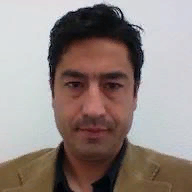
Rui M. Ligeiro
Work place: INOV INESC INOVAÇÃO, Rua Alves Redol 9, 1000-029 Lisbon, Portugal
E-mail: rui.ligeiro@gmail.com
Website:
Research Interests: Quantum Computing Theory, Natural Language Processing, Artificial Intelligence
Biography
Rui M. Ligeiro was born in 1973 in Lisbon, Portugal. He graduated from University of Lisbon, Faculty of Sciences (1998) with a degree in Computer Science. He received his M.Sc. (2011) in Complexity Sciences from the joint degree program between ISCTE – IUL University of Lisbon and University of Lisbon, Faculty of Sciences. He is currently a unit coordinator at INOV - INESC Inovação (Lisbon, Portugal). As a researcher, team coordinator, and primary investigator, he participated in about 20 national and international projects. His major fields of study include signal processing, artificial intelligence, natural computing and quantum computing.
Author Articles
Evaluating Image Recognition Efficiency using a Self-Organizing Map
By Rui M. Ligeiro Andrei B. Utkin
DOI: https://doi.org/10.5815/ijigsp.2016.07.01, Pub. Date: 8 Jul. 2016
Recognition and classification of images is an extremely topical interdisciplinary area that covers image processing, computer graphics, artificial intelligence, computer vision, and pattern recognition, resulting in many applications based on contemporary mobile devices. Developing reliable recognition schemes is a difficult task to accomplish. It depends on many factors, such as illumination, acquisition quality and the database images, in particular, their diversity. In this paper we study how the data diversity affects decision making in image recognition, presenting a database driven classification-error predictor. The predictor is based on a hybrid approach that combines a self-organizing map together with a probabilistic logical assertion method. By means of a clustering approach, the model provides fast and efficient assessment of the image database heterogeneity and, as expected, indicates that such heterogeneity is of paramount importance for robust recognition. The practicality of the model is demonstrated using a set of image samples collected from a standard traffic sign database publicly available by the UK Department for Transport.
[...] Read more.Other Articles
Subscribe to receive issue release notifications and newsletters from MECS Press journals